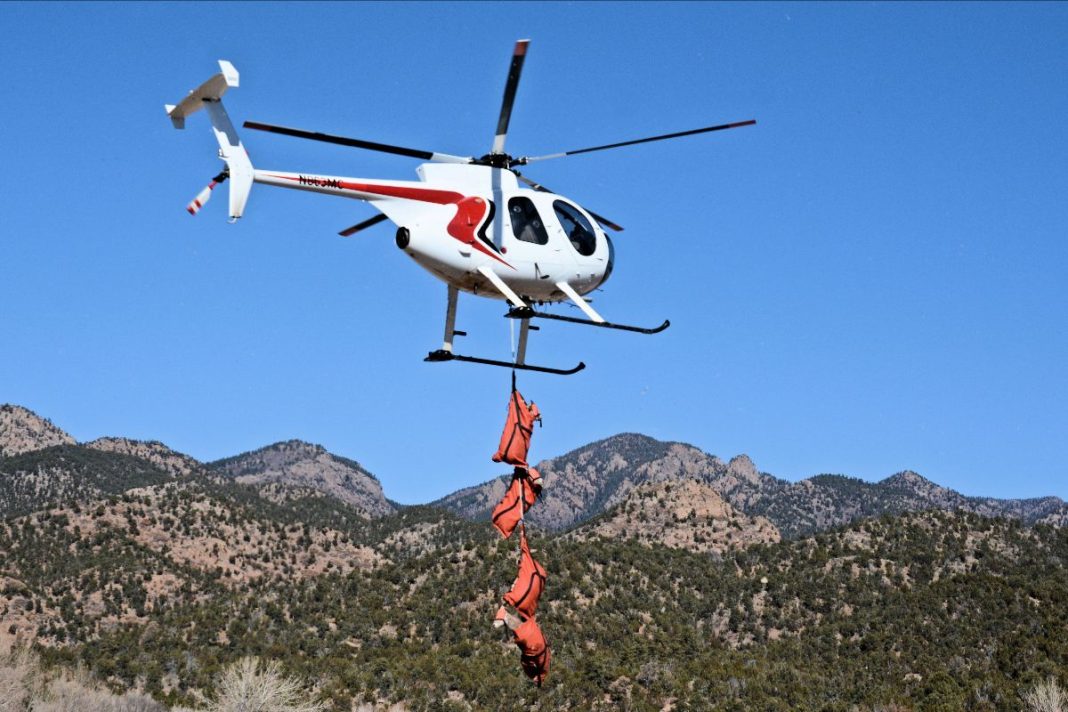Two years of work have come to completion with the relocation of bighorn sheep to Beaver Creek Canyon.
21 bighorn sheep were selected from the Rampart herd that resides west of Colorado Springs to be transported. These 21 bighorns were captured and loaded into a livestock trailer. At that point, they were trailered 90 minutes south to the Beaver Creek Canyon Area. Once the sheep and CPW officials arrived in the area preparations got underway to fly the sheep into the remote area.
Each bighorn was sedated and carefully loaded into slings that would hold them safely as they hung below a helicopter. However, before each of them was loaded into the slings their health was checked and each received an ear tag. Likewise, a special few were radio-collared. At that point, each bighorn was taken on about a ten-minute flight into the more remote parts of the Beaver Creek Canyon Area.
This planning and capture is all part of the CPW’s ongoing mission to re-establish native species in historic ranges.
At one point the Beaver Creek Canyon Area was home to a robust herd of bighorn sheep. However, after battling with several diseases most of the sheep have died out. As a result of this die-off, the CPW began discussing relocating some sheep back into the area. These relocations and reintroductions have been happening on and off in Colorado since the 1940s.
In 1944, the Tarryall bighorn sheep herd was used to reintroduce sheep near Georgetown, in Glenwood Canyon, and, by accident, near the Garden of the Gods in Colorado Springs.
You can read more about this two-year-long Beaver Creek Canyon relocation by clicking here. You can also read more Colorado hunting news by clicking here.















